Did you know the average affiliate makes over $8,000 a month?
Not bad for a skill that let’s you work anywhere, set your own hours, and earn an income online.
However, there is more:
Established affiliates with over 10 years experience, bring in on average $44,000+ a month.
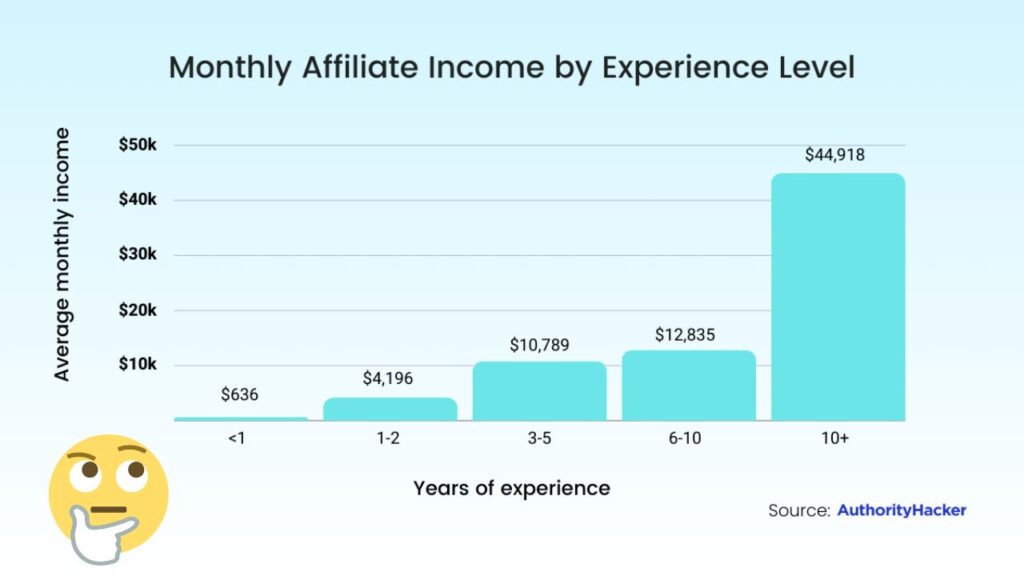
So, in you’re first year as an affiliate, you can expect a return of $636 a month. This amount probably won’t cover your bills, or fast-track you toward a luxury life style.
Still, if you can get through the first two years, the rewards are enormous.
I can help you get there by sharing various tips on how to become a successful affiliate marketer for you to use…
Where To Share Your Affiliate Links?
Let’s start with how to promote an affiliate link? There are four main ways, each with it’s own strengths and weaknesses:
Search Engine Optimization
Search engine optimization (SEO) is about building a search-friendly website that targets keywords your audience is searching online. It’s a primary traffic source for affiliate marketers.
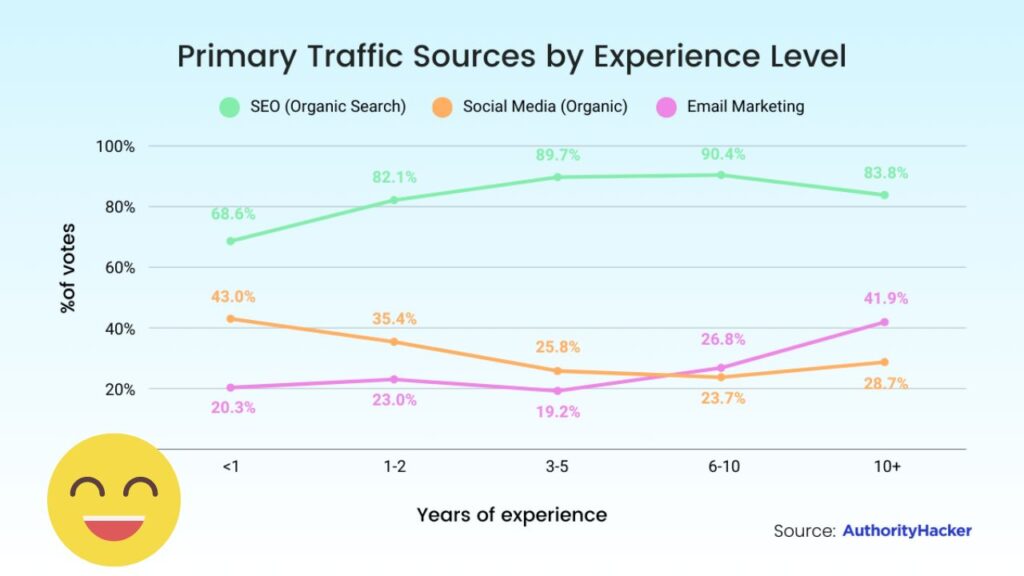
Know this, SEO is tough. If you target a keyword with high search volume, you’ll likely be competing with big publishers like Forbes or Business Insider. So you’ve got a lot of work a head of you to get anywhere near the top #10 search results.
Organic search is very competitive, with a 13-month study of over 28,000 domains finding that <5% of websites maintain their top #10 rankings for a whole year.
✅ Search Engine Optimization Pros:
- Free traffic source.
- Targets qualified searchers for specific information.
- A source of targeted traffic for years.
❌ Search Engine Optimization Cons:
- Building a website for SEO can take a long time.
- It can be hard to outrank established authority sites.
- Search engines change regularly, so your rankings can drop over night.
Email Marketing
Email marketing has the highest return on investment (ROI) of any marketing strategy, yet it’s still an untapped traffic source – especially among new affiliates. In fact, 47.8% of affiliate marketers use email marketing more than beginners.

Email marketing expenses are low (just the cost of your email platform), also investing in list building reduces the need of organic search and social media by letting you share affiliate links straight to your audience’s inbox.
✅ Email Marketing Pros:
- Low investment.
- Good return on investment.
- Reduces reliance on organic search and social media.
❌ Email Marketing Cons:
- You’ll need a specific page to grow your email list (like a capture page).
- It can take time to grow your email list.
Paid Marketing
Paid marketing on sites like Google and Facebook mostly work on a pay-per-click (PPC) basis, which involves: you creating an ad, setting a budget, and you only pay when someone clicks through to your website.
This is a convenient way to drive traffic to your affiliate links – you can build an entire ad campaign quickly, then start getting clicks once the ad is live. However, it’s becoming more and more expensive, with an average cost-per-click of $4.22 (and there is no guarantee that a visitor will buy anything).
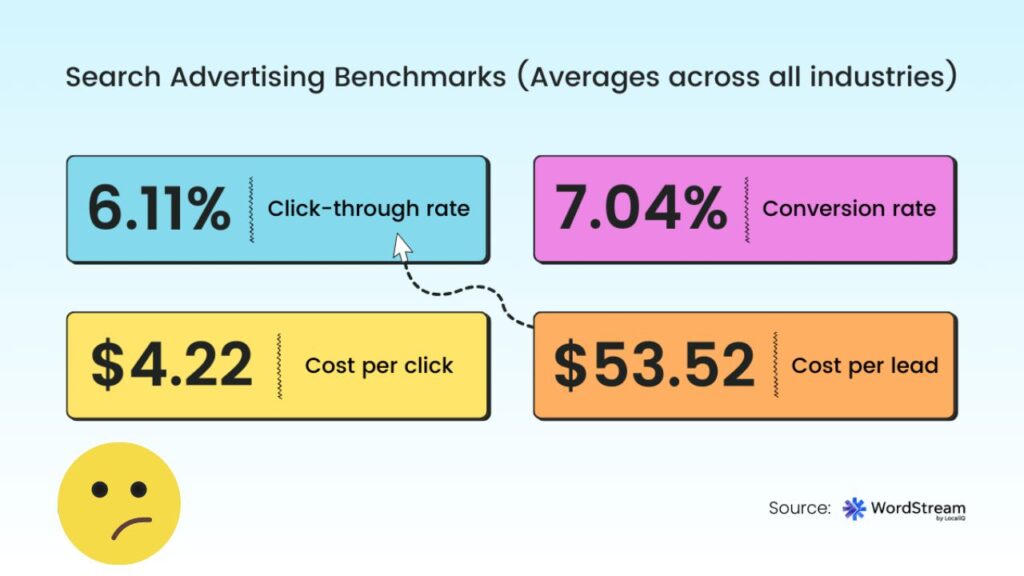
Depending on what you are promoting, PPC might not be the best approach.
✅ Pay-Per-Click Pros:
- Building ad campaigns is quick and easy.
- Campaigns that go live, can start generating traffic instantly.
❌ Pay-Per-Click Cons:
- The cost-per-click can be high in some niches.
- If the ad stops, the traffic stops too.
Organic Social Media
Organic social media is about posting on platforms like Facebook, Twitter, and TikTok, without a TikTok ad campaign. So it’s similar to SEO: you’re relying on the quality of your content to reach your audience.
Unfortunately, organic social reach has dropped drastically (Facebook in particular) in recent years. To make things worse, Facebook and TikTok want to keep you on their platforms, not click through to an affiliate link – so it’s becoming increasingly more difficult to use as a traffic source.
Which is why affiliate experts use organic social media 26.7% less of the time.
✅ Organic Social Media Pros:
- Free traffic source.
❌ Organic Social Media Cons:
- Organic reach is dropping on most social media platforms.
- Hard to turn social views into website visits.
A Highly Effective Strategy for Affiliate Marketers
Most successful affiliate marketers use different content types to reach their audience and drive traffic towards their affiliate links.
It pays to diversify. That way, your whole affiliate business can’t be ruined by an algorithm update. Also, the more your audience sees your content, the more likely they’ll click through to your affiliate links.
Now leveraging different content types is nothing new.
However, there’s one specific affiliate strategy that’s surprisingly underused.
It works like this:
- Identify a specific pain point your audience wants solved.
- Build a free or paid online course to help answer that pain point.
- Promote the online course.
- Use the course to recommend specific online tools or products that will help resolve your audience’s pain point.
- Whenever you recommend a tool or product, add an affiliate link so to earn a commission when people click through and buy.
This strategy is effective because the people who sign up for your free or paid online course are looking for answers – and you build good rapport through the process.
So when you recommend a tool or product, they’ll take notice.
Let’s look at a real life example that’s making money through this strategy…
Case Study: Legendary Marketer
Legendary Marketer is an education company that offers courses on topics like digital marketing, email marketing, and also offers coaching.
But that’s not the only way Legendary Marketer makes money. It also deploys the strategy I mentioned before to earn a ton of affiliate commissions.
Apart from the vast courses they sell, Legendary Marketer’s main focus is geared toward promoting one specific product: The 15-Day Online Business Builder Challenge.
Just look at the two call-to-actions (CTAs):
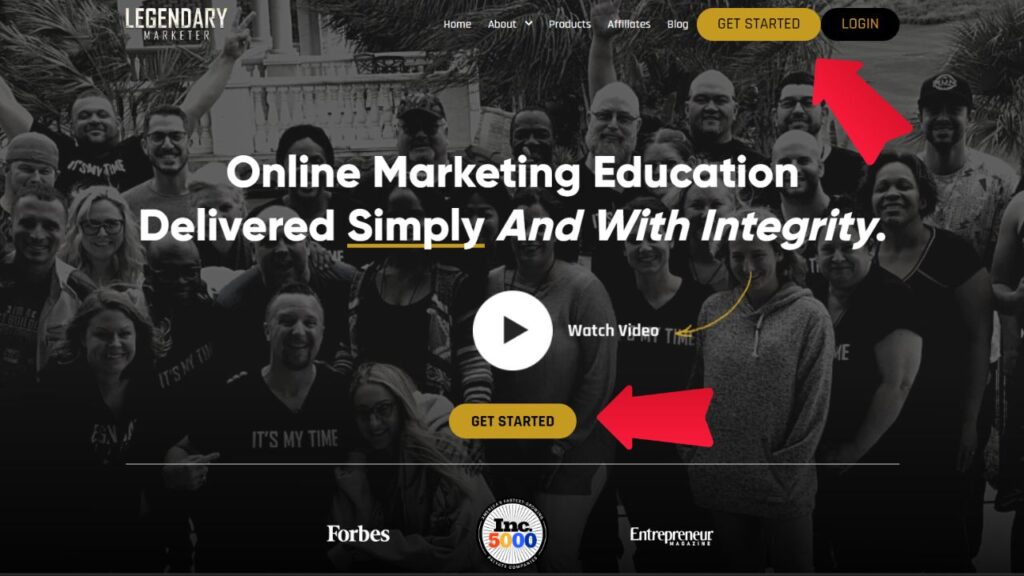
When you click through, you’re greeted with a message that speaks directly to the biggest pain point for anyone trying to build an online business: how to get started?

Legendary Marketer promises to help you overcome that challenge – and all for one low price of $7.
Also, if you try to exit the page, you’ll be hit with an exit intent popup offering exactly the same course for just $1:

Why is the course so cheap?
Because they’re not trying to make as much money from selling the course. The way they make the buckle of their money is from recommending products (using affiliate links) to earn commissions.
Also, enrolling in the course requires registering with an email address to access the content – which means Legendary Marketer can keep sharing recommendations straight to their audiences inbox.
Now, this doesn’t mean The 15-Day Online Business Builder Challenge isn’t legit.
There’s nothing wrong with this sort of practice to earn money online from recommending products, so long as you’re upfront and honest about it.
Another Affiliate Marketing Course Idea
I think we can all agree that Legendary Marketer has hit the nail on the head with this strategy.
But I’m not suggesting you do the same thing. After all, there’s plenty of pain points to solve and other niches to target. For instance:
Pain Point: Getting Your First 500 Email Subscribers
This is a concern for new affiliate marketers (and for any business owner or content creator who wants to leverage email marketing), which makes it a fantastic fit for an online course.
Before you start creating the course content, seek out a few tools that can help you build an email list with good affiliate programs attached. For example:
- Graphic design tool like Canva to design and create a lead magnet.
- Website page builder like OptimizePress to build an email list.
- Email marketing platform like AWeber to set up automated email campaigns.
3 Affiliate Marketing Best Practices for More Clicks & Sales
Building and maintaining a successful affiliate marketing business isn’t just about having the right strategy. You also need to execute it effectively. Consider these best practices:
Choose a Wide Range of Affiliate Partners
Your affiliate partners – also known as vendors – are the people who will pay you for promoting their products. So it’s fair to say they’ll play an important role on your journey to affiliate marketing success.
Naturally, affiliate vendors want to build mutually beneficial relationships with their best affiliates.
But it’s important to remember that they have businesses, not charities, so they might be compelled to change their terms and policies at any given moment. Like Amazon – one of the world’s biggest affiliate vendors – famously slashed commissions across multiple categories back in 2020, putting a major dent in many affiliate marketers earnings.
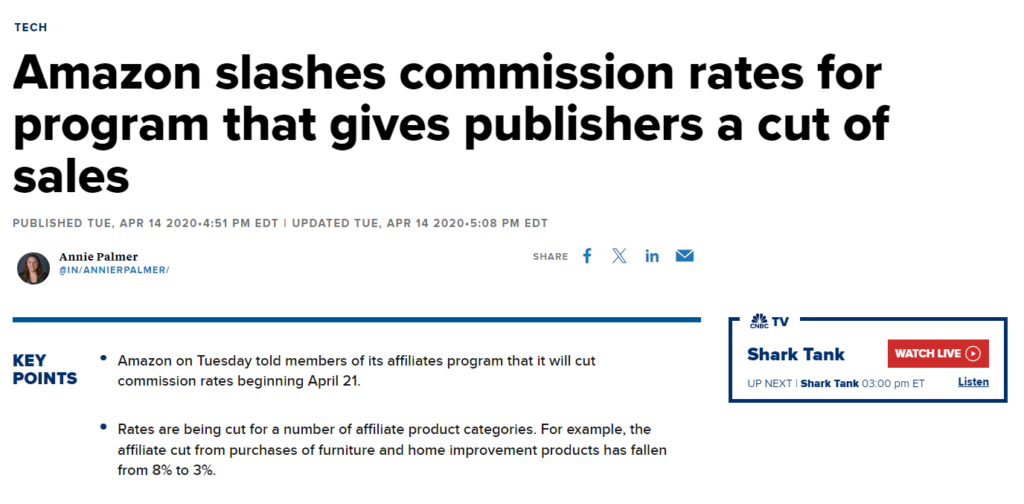
If you put all your effort into a single affiliate program, a similar decision could happen from the affiliate vendor which could drastically reduce your earnings.
So it just makes senses to spread your efforts around by promoting multiple affiliate programs.
Promote Quality Products
When you’re looking for affiliate partners, it’s easy to be attracted to high commission rates.
But the reality is that the highest-paying products aren’t necessarily the best fit for your audience. Sadly, the exact opposite is often true: they’re only paying big commissions because otherwise no one would recommend them.
While it’s tempting to focus on making as much money as possible in the short term, your affiliate business will be a whole lot more sustainable if you exclusively promote high-quality products. So take the time to check out customer reviews before signing up – and, ideally, recommend products that you actually use.
Focus on Building an Email List
Sure, there are real affiliate marketers making big money from their followings on platforms like YouTube and Instagram.
But there’s a problem: those people don’t actually own their audience. Instagram and YouTube do.
You might be thinking: “So what? I don’t care if YouTube has all the power as long as I’m still making money.” However, there are major downsides to this approach.
For starters, social media can change fast. If people suddenly lose interest in your chosen social platform, BAM, there goes your audience – and there’s no guarantee they’ll follow you to a different platform.
It also leaves you overly reliant on social algorithms. If Instagram or YouTube decide they don’t want people to see your content anymore… Poof! There goes you’re audience.
That’s why I believe the best approach to becoming a successful affiliate marketer is to build your own website. Or, better yet, have your own capture page so you can build an email list.
As always, thanks for reading!

Carl Davies
P.S. Did you find this post about “How To Become a Successful Affiliate Marketer” helpful? If so, please spread the love by sharing and commenting.
2 replies to "How To Become a Successful Affiliate Marketer"
Absolutely spot-on advice! As someone who’s been navigating the world of affiliate marketing for a while now, I can’t stress enough the importance of these three pillars.
Thanks Craig for commenting. I’m glad you got value.